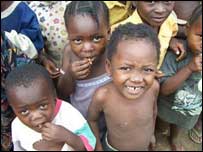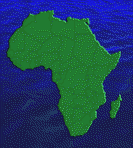| |
 Welcome
to the official web site of
Life ( LOVE, INDEPENDENCE, FREEDOM,
EQUALITY ) for Africa in Australia – where we are committed to supporting &
making a difference in the lives of babies and children affected by
HIV/AIDS in Africa. Welcome
to the official web site of
Life ( LOVE, INDEPENDENCE, FREEDOM,
EQUALITY ) for Africa in Australia – where we are committed to supporting &
making a difference in the lives of babies and children affected by
HIV/AIDS in Africa.
Facts in brief about HIV/Aids

By the end of 2005, 40.3
million people were living with HIV/AIDS, including 17.5 million
women and 2.3 million children under the age of 15.4.9 million
people became newly infected with HIV in 2005, including 700,000
children. Of these, 3.2 million new infections occurred in
Sub-Saharan Africa.
In 2005 alone, a total of
3.1 million people died of HIV/AIDS-related causes. World-wide, only
one in ten persons infected with HIV has been tested and knows
his/her HIV status. Ninety-six percent of people with HIV live in
the developing world, most in sub-Saharan Africa.
South Africa has the fifth
highest prevalence of HIV in the world, with 21.5% of the population
estimated to be infected. Given the numbers of people infected and
dying, South Africa is regarded as having the most severe HIV
epidemic in the world. Efforts to stem the tide of new infections
have only had limited success, as behaviour change and social change
are long-term processes, and the factors that predispose people to
infection – such as poverty, illiteracy, and gender inequalities
– cannot be addressed in the short term. In 2004, it was estimated
that there are 2.2 million orphaned children in the country (meaning
13% of all children have lost either a mother or father); nearly
half of all orphans were estimated to have lost parents to
AIDS-related illnesses. The worst affected children – those in
deeply impoverished households – are losing their health (through
infection, inadequate nutrition, and poor health care
In some African countries,
three quarters of those infected are women - many of whom have not
had more than one sexual partner. An estimated 5 to 6 million people
in low- and middle-income countries will die in the next two years
if they do not receive antiretroviral treatment (ART). At the end of
2005, only one in seven Asians and one in ten Africans who need ART
were receiving it.
In six African countries,
(Botswana, Lesotho, Namibia, South Africa, Swaziland and Zimbabwe),
more than one in five of all pregnant women have HIV/AIDS. In
Swaziland, nearly 40% of pregnant women are HIV-positive.
Without prevention efforts,
35% of children born to an HIV positive mother will become infected
with HIV. At least a quarter of newborns infected with HIV die
before age one, and up to 60% will die before reaching their second
birthdays.
I would like to thank the following organisations for sharing their data, HRW Org, The World Bank, UNAIDS, WHO, CIA World FactBook, UAAID & Curtin University.

|
|

